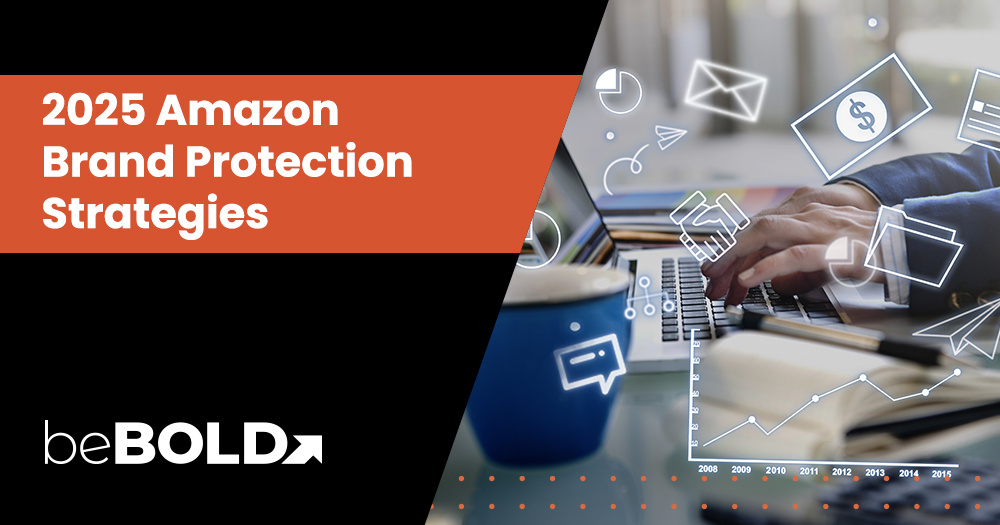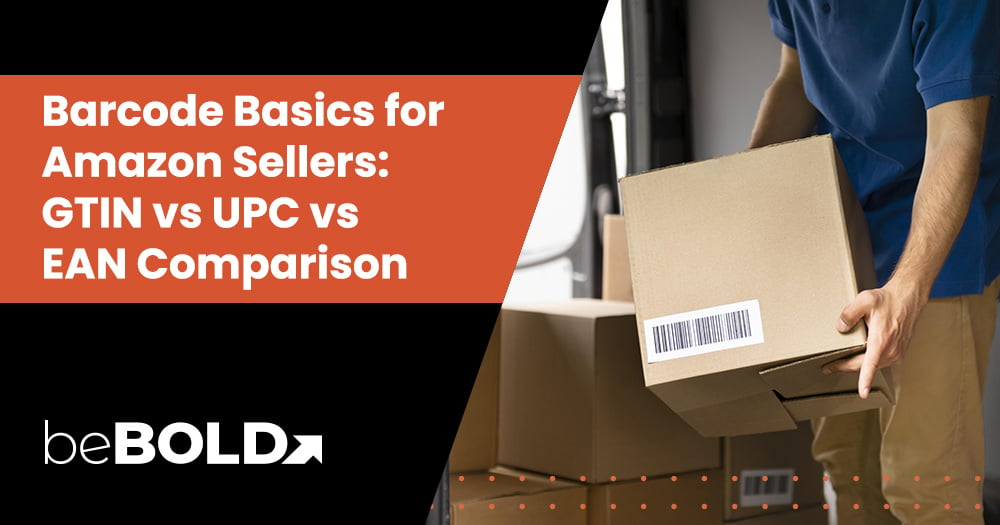Amazon, the world's largest online marketplace, has established itself as a trusted platform for millions of customers and sellers. However, the rise of counterfeit products and unauthorized sellers poses a threat to both customers and brand owners.
To address this issue, Amazon has developed robust brand protection measures to ensure the authenticity of products and maintain customer trust.
In this ultimate guide to Amazon Brand Protection, we will explore the key aspects of protecting your brand on Amazon. From understanding the importance of brand protection to implementing proactive strategies, we will cover all the essential steps to safeguard your brand's reputation and revenue.
Amazon Brand Protection Key Highlights
Amazon's Brand Protection Report highlights the company's progress in driving counterfeits to zero.
- The report showcases Amazon's commitment to customer trust and the steps taken to protect customers from counterfeit products.
- Amazon's strategic combination of technology and expertise has successfully prevented the sale of over 6 million counterfeit products.
- The company's proactive efforts, industry-leading tools, and collaborations with brands and law enforcement have contributed to brand protection.
- Innovations in seller vetting, reduction of invalid notices of infringement, and the identification and disposal of counterfeit products are notable achievements.
- Amazon's commitment to educating consumers about the dangers of counterfeits and industry-wide partnerships are driving the fight against counterfeiting.
What is Amazon Brand Protection?
Amazon Brand Protection involves the implementation of strategies and measures to safeguard a brand's intellectual property rights and prevent unauthorized sellers from selling counterfeit or infringing products on the Amazon marketplace.
It encompasses various tools and services provided by Amazon, including the Brand Registry program, which allows brand owners to register their trademarks and gain access to additional brand protection features.
By leveraging Amazon's brand protection services, brand owners can proactively monitor and enforce their intellectual property rights, ensuring the integrity of their brand on the platform.
What Are the Consequences of Inadequate Amazon Brand Protection?
Without adequate brand protection measures, the consequences can be severe:
- Loss of Revenue: Counterfeits and unauthorized sellers undercut prices, leading to significant revenue loss.
- Reputation Damage: Poor-quality counterfeits associated with your brand can tarnish customer trust.
- Customer Confusion: Multiple unauthorized listings create confusion and dilute brand identity.
- Legal Risks: Unchecked intellectual property infringement can lead to complex legal battles.
- Operational Challenges: Time and resources spent combating these issues divert focus from business growth.
Common Threats to Your Amazon Brand

Threats not only impact your brand's revenue but also pose risks to your customers' safety and satisfaction. By understanding the common threats, brand owners can take proactive measures to protect their brand's integrity and reputation on Amazon.
Unauthorized and Counterfeit Selling
Unauthorized and counterfeit selling on Amazon can significantly damage your brand’s reputation, erode customer trust, and lead to financial losses. Unauthorized sellers often distribute counterfeit or unapproved products, confusing consumers and diminishing your product's credibility. Counterfeit products may also pose safety risks, further jeopardizing your brand's integrity.
To effectively combat unauthorized and counterfeit selling, brand owners should monitor the Amazon marketplace for suspicious listings, report infringements through Amazon’s Brand Registry, and take legal action if necessary. Collaborating with Amazon and law enforcement agencies can also help identify and remove counterfeit products from the platform.
By taking a proactive approach, brand owners can protect their intellectual property, ensure the safety of their customers, and maintain the trust and loyalty that are essential for long-term business success.
Hijacking Product Listing
Hijackers exploit legitimate listings by adding counterfeit or unauthorized products, misleading customers and damaging your product’s credibility. This deceptive practice can result in negative reviews, lost sales, and harm to your brand’s reputation.
To effectively combat hijackers, brand owners should prioritize early detection and swift action. Strategies include closely monitoring your listings for suspicious activity, using Amazon's Brand Registry tools to report violations, and pursuing legal measures when necessary.
Taking proactive steps to address hijackers helps protect your brand's integrity, maintain customer trust, and ensure a consistent shopping experience.
Manipulating Reviews
Fake reviews—whether positive or negative—can distort product ratings and mislead customers, impacting purchasing decisions. A recent analysis indicated that a significant portion of Amazon reviews may be inauthentic, emphasizing the scale of this issue.
To combat review manipulation effectively, brand owners can leverage AI tools designed to detect suspicious patterns and flag potentially fake reviews. Proactively addressing review fraud helps preserve genuine customer feedback, build trust, and ensure a fair marketplace for both brands and consumers.
Price Undercutting
Unauthorized sellers frequently undercut prices, triggering a race to the bottom that not only harms authorized resellers but also diminishes your brand's perceived value. This price erosion can lead to customer confusion and a loss of trust in your product's quality. It's important to know how much you can sell your product within the market place.
To prevent this, implementing Minimum Advertised Price (MAP) policies can effectively deter unauthorized sellers from engaging in price undercutting. By establishing clear pricing guidelines and enforcing these policies, brand owners can maintain pricing consistency, protect authorized resellers, and uphold the premium value of their brand.
Intellectual Property Infringement
Copying product designs, trademarks, or logos not only infringes on intellectual property (IP) rights but also creates confusion among customers, undermining brand identity. Such violations can lead to significant reputational damage and lost revenue.
To address these issues effectively, brands must implement vigilant IP monitoring to detect unauthorized use of their designs and trademarks. Legal support is crucial for taking swift action against IP infringements, including sending cease-and-desist letters or pursuing legal proceedings. By proactively protecting their intellectual property, brands can safeguard their reputation and ensure customers can trust the authenticity of their products.
Fake Complaints
Malicious actors or competitors may file fake complaints with the intent to suppress your listings or damage your seller account, undermining your brand’s presence on the marketplace. These false claims can lead to account suspensions, lost sales, and reputational harm.
To protect your brand against such malicious actions, it's essential to establish strong proof of authenticity for your products and listings. This includes maintaining clear documentation, such as invoices from authorized suppliers and certifications of product authenticity. By providing evidence of your product’s legitimacy, you can defend against false claims and ensure your brand remains protected from attempts to undermine it.
Unauthorized Seller Management
Managing unauthorized sellers is a critical aspect of Amazon’s brand protection. Unauthorized sellers can undermine your brand by selling counterfeit or unauthorized products, creating pricing discrepancies, and jeopardizing your control over product distribution.
To effectively manage unauthorized sellers, brand owners can utilize various strategies, including monitoring the Amazon marketplace for unauthorized listings, reporting violations to Amazon, and taking legal action when necessary.
Collaborating with law enforcement agencies can also help in identifying and prosecuting bad actors engaged in counterfeiting or IP infringement.
By proactively managing unauthorized sellers, brand owners can maintain control over their brand's reputation and ensure a consistent buying experience for customers.
Also Read: Mastering How to Become an Amazon Seller
Identifying Unauthorized Sellers
Identifying unauthorized sellers is crucial for brand protection on Amazon. Unauthorized sellers often create new selling accounts to list counterfeit or unauthorized products. However, Amazon's robust seller verification process and proactive monitoring can help identify and deter bad actors from creating new accounts.
Amazon's seller verification process includes document forgery detection, advanced image and video verification, and other technologies to confirm the authenticity of government-issued identity documents. By leveraging machine learning-based detection, Amazon can detect and prevent bad actors from creating new selling accounts.
It is essential for brand owners to stay vigilant and regularly monitor the Amazon marketplace for unauthorized sellers. By effectively identifying and reporting unauthorized sellers, brand owners can take appropriate actions to protect their brand's integrity and customer trust.
Strategies for Dealing with Unauthorized Sellers
Dealing with unauthorized sellers requires a proactive approach to protect your brand's reputation and revenue. Brand owners can employ several strategies to address unauthorized sellers on Amazon.
One effective strategy is to send cease and desist letters to unauthorized sellers, demanding them to stop selling counterfeit or unauthorized products. Cease and desist letters can be a powerful tool to deter unauthorized sellers and protect your brand's intellectual property rights.
Another strategy is to leverage Amazon Brand Registry, which provides brand owners with additional tools and resources to enforce their intellectual property rights.
Brand Registry allows brand owners to create a trusted and recognizable brand presence on Amazon, making it easier to identify and address unauthorized sellers.
By combining effective proactive efforts, including monitoring the Amazon marketplace, reporting violations, and utilizing the resources provided by Amazon Brand Registry, brand owners can effectively manage and mitigate the impact of unauthorized sellers on their brand.
Third-Party (3P) Management
Third-party (3P) management is an essential aspect of brand protection on Amazon. Amazon Retail, the first-party seller, and third-party sellers coexist on the platform, offering customers a wide range of products and choices.
The Buy Box, a prominent feature on Amazon, is crucial for driving sales. Winning the Buy Box means that a seller's offer is featured as the default "Add to Cart" option, increasing visibility and sales volume. However, the Buy Box is highly competitive, and unauthorized sellers can undercut legitimate sellers, negatively impacting sales and customer trust.
Brand owners can enhance their brand's presence and protect their sales by effectively managing third-party sellers.
Strategies such as establishing authorized reseller programs and implementing seller leech removal techniques can help ensure that authorized sellers win the Buy Box and maintain control over product pricing and distribution.
Buy-Box Monitoring and Its Benefits
Monitoring the Buy Box is crucial for brand protection on Amazon. Winning the Buy Box can significantly impact sales volume and customer trust. Here are the benefits of Buy-Box monitoring:
- Increased sales volume: Winning the Buy Box increases visibility and sales, leading to higher revenue and market presence.
- Customer protection: Authorized sellers in the Buy Box ensure that customers receive genuine products and a positive buying experience.
- Control over pricing and distribution: Winning the Buy Box allows brand owners to control pricing, preventing unauthorized sellers from undercutting prices.
- Enhanced brand reputation: Consistently winning the Buy Box establishes your brand as a trusted seller, enhancing customer trust and loyalty.
- Brand Gating: Premium Beauty is an authorized selling platform or "brand gating" where the brand has the ability to sell direct and potential choice to up to 3 additional sellers.
By actively monitoring the Buy Box and implementing strategies to ensure authorized sellers win the Buy Box, brand owners can protect their brand's reputation and revenue on Amazon.
Establishing Authorized Reseller Programs
Establishing authorized reseller programs is an effective strategy for brand protection on Amazon. Authorized resellers are vetted sellers who have been authorized by the brand owner to sell their products on Amazon.
By partnering with authorized resellers, brand owners can maintain control over product distribution, pricing, and customer experience. Authorized resellers adhere to brand guidelines and ensure that only genuine products are sold on Amazon.
Brand owners can implement authorized reseller programs by setting clear guidelines and requirements for resellers, including minimum order quantities, adherence to pricing policies, and product authentication processes.
By establishing strong partnerships with authorized resellers, brand owners can enhance brand protection and provide customers with a trusted buying experience.
Effective Seller Leech Removal Techniques
Seller leeches are unauthorized sellers who piggyback on legitimate product listings to sell counterfeit or unauthorized products. Detecting and removing seller leeches is crucial for brand protection on Amazon.
Brand owners can employ effective techniques to identify and remove seller leeches, including:
- Regularly monitoring product listings for unauthorized sellers.
- Reporting violations to Amazon and providing evidence of unauthorized activity.
- Utilizing machine learning algorithms to detect and remove seller leeches at scale.
By consistently monitoring and removing seller leeches, brand owners can protect their brand's reputation, revenue, and customer trust.
Amazon Counterfeit Management
Counterfeit management is a critical aspect of brand protection on Amazon. Counterfeit listings can deceive customers and damage a brand's reputation.
To tackle counterfeits, Amazon has established the Counterfeit Crimes Unit, a dedicated team focused on identifying, stopping, and prosecuting counterfeiters. The unit works closely with brands and law enforcement agencies to combat counterfeiting activities.
By actively identifying and removing counterfeit listings, Amazon ensures the authenticity of products sold on its platform. This commitment to counterfeit management helps protect customers and maintain the integrity of brands on Amazon.
How to Identify Counterfeit Products
Identifying counterfeit products is crucial for brand protection on Amazon. Counterfeiters employ various tactics, such as fake reviews and imitation packaging, to deceive customers.
Brand owners can take the following steps to identify counterfeit products:
- Monitor customer reviews for suspicious patterns or excessively positive reviews.
- Conduct thorough inspections of product listings, paying attention to pricing discrepancies, listing quality, and seller information.
- Verify the authenticity of products through serial numbers, holograms, or other authentication features.
By actively monitoring and verifying product listings, brand owners can detect and report counterfeit products, ensuring the authenticity and quality of their brand's offerings on Amazon.
Reporting Violators to Amazon
Reporting violators to Amazon is an essential step in brand protection. Brand owners can report IP infringement, counterfeit products, or unauthorized sellers to Amazon through the appropriate channels.
When reporting violators, brand owners should provide evidence of infringement, such as product images, trademarks, or copyright registrations. Amazon takes these reports seriously and takes appropriate actions, including removing listings, suspending seller accounts, or referring cases to law enforcement.
By actively reporting violators, brand owners can contribute to maintaining the integrity of the Amazon marketplace and protecting their brand's reputation.
Leveraging Amazon's Transparency Program
Leveraging Amazon's Transparency Program is an effective strategy for brand protection. The program allows brand owners to apply unique transparency barcodes to their products, ensuring the authenticity and traceability of each unit.
By implementing transparency barcodes, brand owners can:
- Authenticate products: Customers can use the Amazon app to scan the barcode and verify the authenticity of the product.
- Prevent counterfeits: The unique barcode prevents counterfeit products from entering the supply chain.
- Enhance brand trust: The transparency program assures customers that they are purchasing genuine products from authorized sellers.
By participating in Amazon's Transparency Program, brand owners can enhance brand protection, provide customers with authentic products, and combat counterfeiting.
Legal Actions and Manufacturer Source Reporting

Legal actions and manufacturer source reporting are important components of brand protection. Taking legal action against counterfeiters and reporting the sources of counterfeit products can deter future infringement.
Brand owners can consider the following actions:
- Crafting cease and desist letters to demand counterfeiters to stop their activities.
- Filing trademark infringement lawsuits to protect their intellectual property rights.
- Reporting manufacturers and suppliers of counterfeit products to disrupt the supply chain.
By utilizing legal actions and manufacturer source reporting, brand owners can actively combat counterfeiting and protect their brand's integrity.
Crafting Cease and Desist Letters
Crafting effective cease and desist letters is crucial for brand protection. Cease and desist letters can demand counterfeiters or unauthorized sellers to stop infringing on a brand's intellectual property rights.
When crafting a cease and desist letter, brand owners should:
- Clearly state the infringement and specify the actions required to cease the infringement.
- Provide evidence of the infringement, such as product listings, trademarks, or copyrights.
- Set a deadline for the recipient to comply with the demands.
Cease and desist letters can be an effective tool to deter infringers, protect a brand's intellectual property, and maintain its reputation.
Filing Trademark Infringement Lawsuits
Collaborating with legal experts to file lawsuits against repeat offenders has proven effective in protecting intellectual property rights and deterring future infringements.
When pursuing legal action, brand owners should:
- Partner with legal professionals who specialize in intellectual property law.
- Collect and present strong evidence of repeated infringement, such as fraudulent copyright claims or counterfeit goods.
- Initiate legal proceedings promptly to prevent further harm to the brand’s reputation and sales.
In 2023, Amazon's Counterfeit Crimes Unit (CCU) intensified its efforts by filing lawsuits against multiple bad actors who submitted thousands of false copyright infringement claims. These claims aimed to have legitimate sellers and their products removed from the Amazon store.
Legal actions like these safeguard brands and maintain the integrity of Amazon's marketplace. By holding counterfeiters accountable through litigation, Amazon demonstrates its commitment to combating counterfeit goods and supporting authentic brands.
The Role of Manufacturer Source Reporting in Brand Protection
Reporting the sources of counterfeit products is a crucial step in brand protection. By identifying and reporting manufacturers and suppliers of counterfeit products, brand owners can disrupt the supply chain and prevent the circulation of counterfeit goods.
Manufacturer source reporting serves as a powerful tool to combat counterfeiting. Brand owners can collaborate with law enforcement agencies and Amazon's brand protection services to identify and take legal action against counterfeit manufacturers.
By actively participating in manufacturer source reporting, brand owners can contribute to the fight against counterfeiting, protect their brand's reputation, and ensure the authenticity of their products on Amazon.
Collaborative Efforts and Legal Actions
Collaborative efforts and legal actions play a crucial role in protecting intellectual property rights and combating infringement effectively.
By partnering with industry associations, online marketplaces, and law enforcement agencies, brands can strengthen their enforcement strategies. Collaborative initiatives such as information sharing and joint investigations help identify counterfeit networks and prevent the spread of fake products across multiple platforms.
Legal actions, including cease and desist letters, lawsuits, and trademark enforcement proceedings, provide a powerful means of holding infringers accountable. Taking legal steps can deter repeat offenders and send a clear message that intellectual property violations will not be tolerated.
By combining collaborative efforts with legal enforcement, brands can create a comprehensive protection strategy that safeguards intellectual property, deters counterfeiters, and ensures a safer marketplace for consumers.
Proactive Brand Protection Strategies
Implementing proactive brand protection strategies is essential for maintaining a strong brand presence on Amazon. Brand owners can utilize various tools and services to protect their intellectual property and prevent unauthorized activity.
The Amazon Brand Registry program plays a crucial role in proactive brand protection. It allows brand owners to register their trademarks, access brand protection features, and enforce their intellectual property rights.
By actively participating in the Amazon Brand Registry and employing proactive brand protection strategies, brand owners can safeguard their brand's reputation, revenue, and customer trust on Amazon.
Registering Your Brand with Amazon Brand Registry
Registering your brand with the Amazon Brand Registry is a vital step in proactive brand protection. Brand owners can leverage the program's resources and tools to protect their intellectual property rights and maintain control over their brand's presence on Amazon.
To register your brand with Amazon Brand Registry, follow these steps:
- Verify your eligibility as a brand owner or authorized agent.
- Submit accurate information about your brand, including trademarks, logos, and product listings.
- Utilize the program's tools and reports to monitor and enforce your intellectual property rights.
By registering your brand with the Amazon Brand Registry, you can take proactive measures to protect your brand's reputation, revenue, and customer trust on Amazon.
Implementing Transparency Codes
Implementing transparency codes is an effective strategy for counterfeit prevention and brand protection. Transparency codes are unique identifiers applied to products that provide visibility into the product's supply chain and authenticity.
By implementing transparency codes, brand owners can:
- Prevent counterfeits: The codes enable customers to verify the authenticity of the product and detect counterfeit items.
- Track products: The codes allow brand owners to trace the product's journey from manufacturing to distribution, ensuring product integrity.
- Enhance customer trust: Transparency codes assure customers that they are purchasing genuine products from authorized sellers.
By embracing transparency codes and product serialization, brand owners can strengthen their brand's presence on Amazon and protect their customers from counterfeit products.
Use Amazon Brand Gating to Protect Your Listing
Brand Gating on Amazon is a proactive measure that empowers brand owners to control who can sell their products on the platform. By requiring third-party sellers to provide proof of authorization—such as manufacturer invoices or written permission—before listing a brand's products, this strategy effectively reduces the presence of counterfeit items and unauthorized resellers.
Brands utilizing Brand Gating have reported a significant decrease in listing hijack attempts, enhancing the integrity of their product listings and maintaining consistent pricing. This approach not only safeguards brand reputation but also ensures that customers receive genuine products, thereby fostering trust and loyalty.
Implementing Brand Gating can lead to increased sales and provide access to advanced marketing tools available through Amazon's Brand Registry.
Amazon's Proactive Measures Against Counterfeits
In 2023, Amazon invested over $1.2 billion and employed more than 15,000 professionals—including machine learning scientists, software developers, and expert investigators—dedicated to brand protection and combating counterfeits.
This investment supported initiatives such as the Counterfeit Crimes Unit, which has pursued over 21,000 bad actors through litigation and criminal referrals since its launch in 2020. Amazon's proactive measures have blocked more than 99% of suspected infringing listings before brands needed to report them.
By 2025, the company plans to increase its investment in anti-counterfeit measures by 33%, further enhancing its commitment to ensuring a trustworthy shopping experience for customers and protecting the integrity of brands selling on its platform.
Enhancing Your Brand's Presence on Amazon
Enhancing your brand's presence on Amazon is crucial for brand protection and customer satisfaction. By optimizing product listings and providing a seamless customer experience, brand owners can differentiate their brand and attract potential customers.
Product listings play a vital role in capturing customers' attention and trust. By optimizing product titles, descriptions, and images, brand owners can improve the visibility of their products in search results.
Additionally, monitoring and responding to customer reviews is essential for maintaining a positive brand reputation. Promptly addressing customer feedback and resolving issues can enhance customer satisfaction and loyalty.
By consistently enhancing your brand's presence on Amazon, you can establish a strong brand identity, improve customer experience, and protect your brand's reputation.
Optimizing Product Listings for Better Visibility
Optimizing product listings is essential for better visibility and brand protection on Amazon. By implementing search engine optimization (SEO) techniques, brand owners can improve the visibility of their products in search results.
To optimize product listings, consider the following strategies:
- Conduct keyword research to identify relevant and high-performing keywords for your product.
- Incorporate these keywords naturally into your product titles, bullet points, and descriptions.
- Use high-quality images and informative product descriptions to attract customers.
By implementing SEO strategies, brand owners can increase their products' visibility, attract more potential customers, and protect their brand's reputation on Amazon.
Monitoring and Responding to Customer Reviews
Monitoring and responding to customer reviews is crucial for brand protection and maintaining a positive brand reputation on Amazon. Customer reviews provide valuable insights into product quality, customer satisfaction, and potential issues.
To effectively monitor and respond to customer reviews, consider the following:
- Regularly monitor customer reviews for feedback and potential issues.
- Respond promptly to both positive and negative reviews, addressing any concerns or issues.
- Take customer feedback into account to improve product quality and customer satisfaction.
By actively engaging with customer reviews, brand owners can demonstrate their commitment to customer satisfaction, enhance their brand reputation, and protect their brand's integrity on Amazon.
Include Trademarked Names and Logos in Your Main Image
Prominently displaying trademarked logos and brand names plays a crucial role in reinforcing authenticity and establishing a strong brand identity.
When using trademarked branding elements, brand owners should:
- Ensure logos and brand names are consistently displayed across packaging, websites, and marketing materials.
- Use high-quality images and clear placements to maximize visibility and recognition.
- Emphasize trademarks in both physical and digital spaces to create a cohesive brand presence.
Clear, visible trademarks also deter counterfeiters by signaling ownership and legal protection, making it harder for bad actors to replicate products. Consistent branding across all customer touchpoints not only helps distinguish products from competitors but also strengthens customer recall.
This familiarity can lead to increased brand loyalty, as consumers feel more confident purchasing from brands they recognize and trust. Ultimately, a cohesive brand presence helps safeguard market position and enhances long-term customer relationships.
Advanced Tools and Services for Brand Protection
Amazon provides advanced tools and services to assist brand owners in their brand protection efforts. By leveraging these tools and services, brand owners can enhance their brand's security and prevent unauthorized activity.
Artificial intelligence-powered solutions and machine learning algorithms are utilized to proactively detect and prevent counterfeit products, counterfeiters, and unauthorized sellers on Amazon.
Brand protection services offered by Amazon, such as the Amazon Brand Registry and IP Accelerator, provide brand owners with additional resources, tools, and support to enforce their intellectual property rights and combat counterfeiting.
By utilizing these advanced tools and services, brand owners can take proactive measures to protect their brand's reputation and revenue on Amazon.
Exploring IP Accelerators
IP Accelerator is a program offered by Amazon to assist brand owners in obtaining trademark protection. The program simplifies the trademark registration process, allowing brand owners to quickly obtain a trademark and enroll in the Amazon Brand Registry.
By partnering with law firms in the IP Accelerator network, brand owners can receive expedited trademark registration services at a competitive cost. Once the trademark is obtained, brand owners can leverage the resources and tools provided by the Amazon Brand Registry to protect their brand's intellectual property rights.
Exploring and utilizing IP Accelerators can streamline the brand protection process and provide brand owners with comprehensive trademark protection on Amazon.
Project Zero and Its Impact on Brand Security
Project Zero is an initiative by Amazon aimed at combating counterfeiting and improving brand security. It provides brand owners with advanced tools and technologies to detect and remove counterfeit listings from the Amazon marketplace.
By leveraging machine learning algorithms and AI-powered counterfeit removal tools, Project Zero enables brand owners to proactively protect their brands from counterfeits. Brand owners can directly remove counterfeit listings without prior notice, enhancing their brand's security and customer trust.
Project Zero's automated tools and machine learning capabilities continuously learn and improve, enabling faster and more accurate counterfeit removal.
By participating in Project Zero, brand owners can actively contribute to the fight against counterfeiting and protect their brand's integrity on Amazon.
The Role of AI in Detecting Fake Reviews
AI plays a critical role in detecting fake reviews by leveraging advanced algorithms and machine learning techniques to identify suspicious patterns and behaviors across online platforms.
By analyzing large datasets, AI can detect inconsistencies in review activity, such as repetitive language, sudden spikes in positive or negative reviews, and accounts posting multiple reviews in a short timeframe. Natural language processing (NLP) further enhances this detection by identifying unnatural phrasing or duplicated content often found in fraudulent reviews.
AI-powered systems also assess reviewer credibility by examining factors like account age, purchase history, and review frequency. These insights help platforms identify and flag potentially deceptive reviews before they influence purchasing decisions.
Integrating AI in review moderation ensures a more transparent and trustworthy online marketplace. By filtering out fake reviews, AI helps maintain consumer trust, protects brand reputation, and ensures customers make informed purchasing decisions based on genuine feedback.
Technological Advancements in Brand Protection
![]()
Technological advancements have significantly transformed brand protection strategies, providing innovative tools to safeguard intellectual property and combat infringement more effectively.
Modern technologies such as artificial intelligence (AI) and machine learning play a key role in detecting counterfeit products, fake reviews, and unauthorized sellers. AI-powered systems can analyze large datasets to identify suspicious patterns, such as repetitive product listings, counterfeit images, and misleading customer feedback, enabling proactive protection measures.
Blockchain technology is also gaining popularity in brand protection by ensuring product authenticity and traceability. Through secure, tamper-proof digital ledgers, brands can verify the origin and movement of products throughout the supply chain, reducing the risk of counterfeit goods entering the market.
Product serialization and QR code tagging have further improved security by allowing brands to assign unique identifiers to individual products. These tools let customers verify product authenticity through simple scans while helping brands monitor distribution channels more effectively.
Cloud-based brand protection platforms offer centralized control, enabling real-time monitoring and enforcement across multiple marketplaces and regions. These platforms combine automated detection with legal enforcement tools, simplifying the process of removing counterfeit listings and pursuing legal action.
By leveraging these technological advancements, brands can strengthen their defense against intellectual property violations, protect consumer trust, and maintain a competitive market presence.
BeBOLD Digital: Empowering Brand Promotion and Protection
Integrating brand protection strategies with promotional efforts can significantly enhance visibility, drive sales, and build long-term customer trust. By adopting a balanced approach between security and marketing, brands can strengthen their overall performance and stay competitive in a dynamic marketplace.
At beBOLD Digital, we specialize in helping brands safeguard their identity while maximizing their presence on platforms like Amazon. Our tailored solutions ensure your brand remains secure and thrives in the competitive eCommerce landscape.
Conclusion
Brand protection on Amazon is crucial for maintaining your reputation and sales. Understanding the threats, managing unauthorized sellers, and combating counterfeits are key steps.
Utilize strategies like buy-box monitoring, authorized reseller programs, and leveraging Amazon's Transparency Program.
Implement proactive measures such as registering with Amazon Brand Registry and using Transparency Codes.
Enhance your brand's visibility through optimized listings and proactive review management. Leveraging advanced tools like IP Accelerators and Project Zero can further fortify your brand against infringements. By prioritizing brand protection, you can safeguard your business and customer trust on the Amazon platform.
Frequently Asked Questions
Why do you need brand protection services on Amazon?
Brand safety on Amazon is essential for safeguarding your intellectual property, preventing counterfeit products, ensuring authentic items for satisfied customers, upholding your brand's reputation, and promoting integrity in the market. Utilize these resources to effectively manage your brand on Amazon and maintain customer trust.
Why is brand registry important on Amazon?
Brand Registry unlocks tools like Transparency and Project Zero, offering enhanced control over listings and counterfeit management. It's a foundational step for Amazon brand protection.
What is the best way to reduce counterfeit risk?
To reduce counterfeit risk, brands should register with Amazon's Brand Registry, utilize tools like Project Zero and Transparency, and actively monitor product listings for suspicious activity. Additionally, leveraging AI-driven solutions for counterfeit detection and implementing robust legal measures are essential to maintaining product authenticity.
How do we stop unauthorized sellers on Amazon?
To stop unauthorized sellers on Amazon, ensure your brand is enrolled in Amazon Brand Registry and use the platform's reporting tools to identify and remove unauthorized listings. Regularly monitor product pages, enforce MAP (Minimum Advertised Price) policies, and take legal action when necessary to protect your brand.
Want to secure your brand on Amazon? Let’s make it happen together with beBOLD Digital! Contact us today for expert guidance. Protect your products, your reputation, and your sales.


.png?width=602&height=480&name=Amazons%20Investment%20in%20Brand%20Protection%20(2020-2028).png)






Comments